
How to Use 4ohm 5W speaker: Examples, Pinouts, and Specs
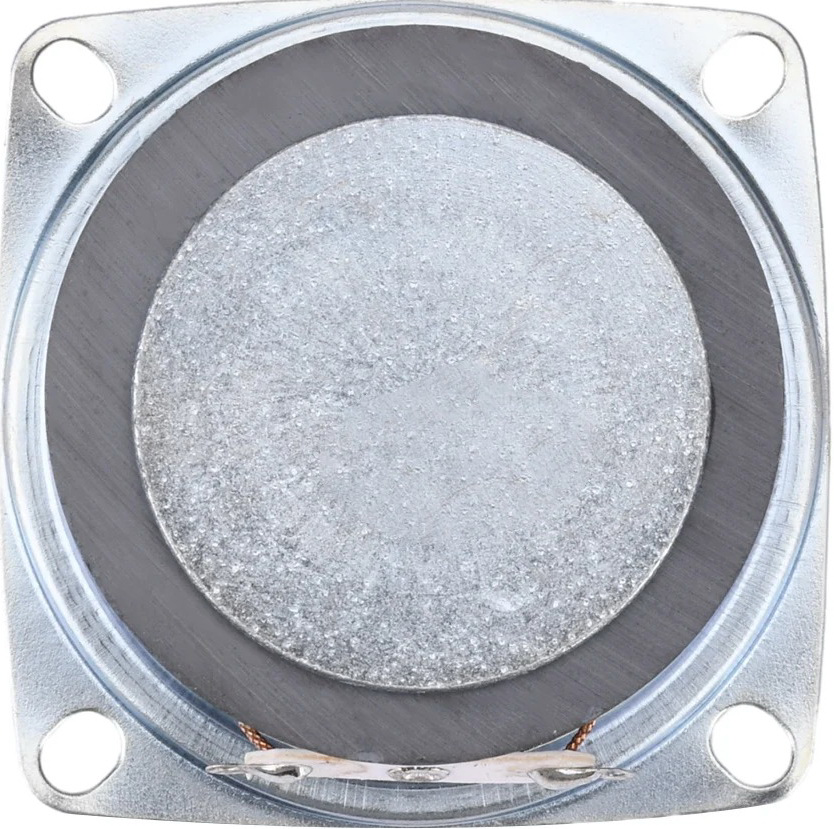
 Design with 4ohm 5W speaker in Cirkit Designer
Design with 4ohm 5W speaker in Cirkit DesignerIntroduction
The 4-Ohm 5W Speaker (Manufacturer: China, Part ID: 2) is a compact and efficient audio output device designed to convert electrical audio signals into sound. With a resistance of 4 ohms and a power rating of 5 watts, this speaker is ideal for low- to medium-power audio applications. It is commonly used in home audio systems, portable speakers, intercom systems, and DIY electronics projects.
Explore Projects Built with 4ohm 5W speaker
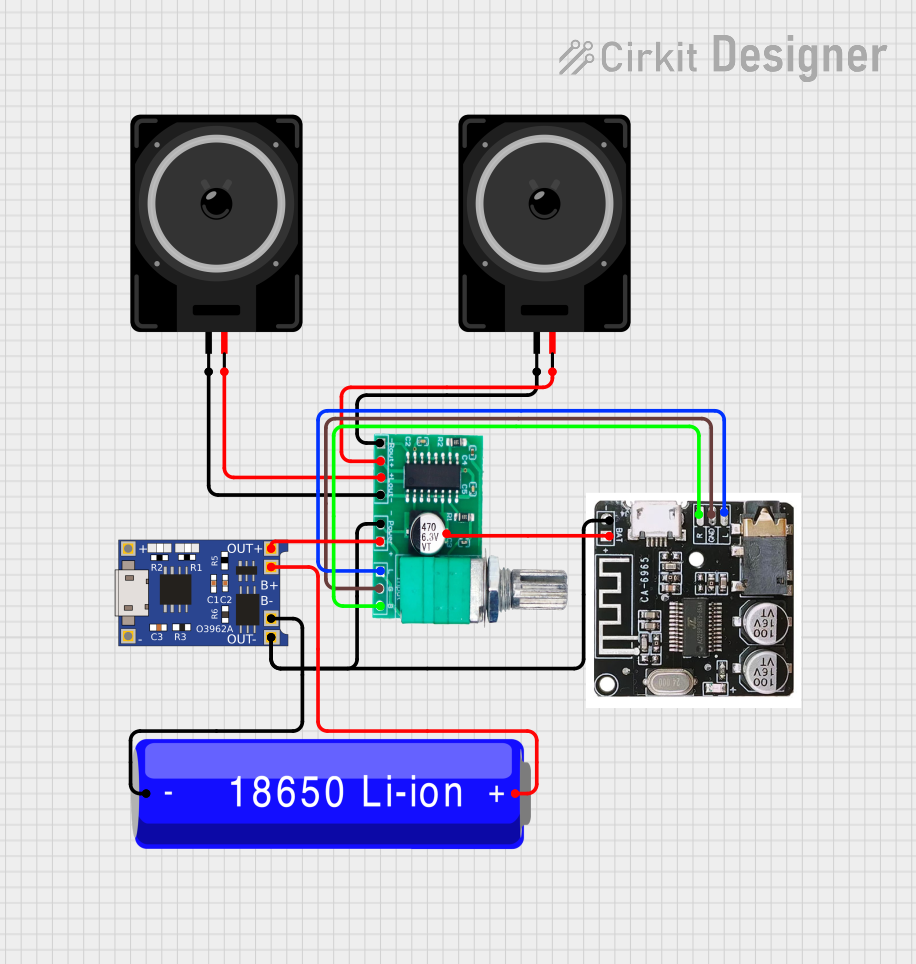
 Open Project in Cirkit Designer
Open Project in Cirkit Designer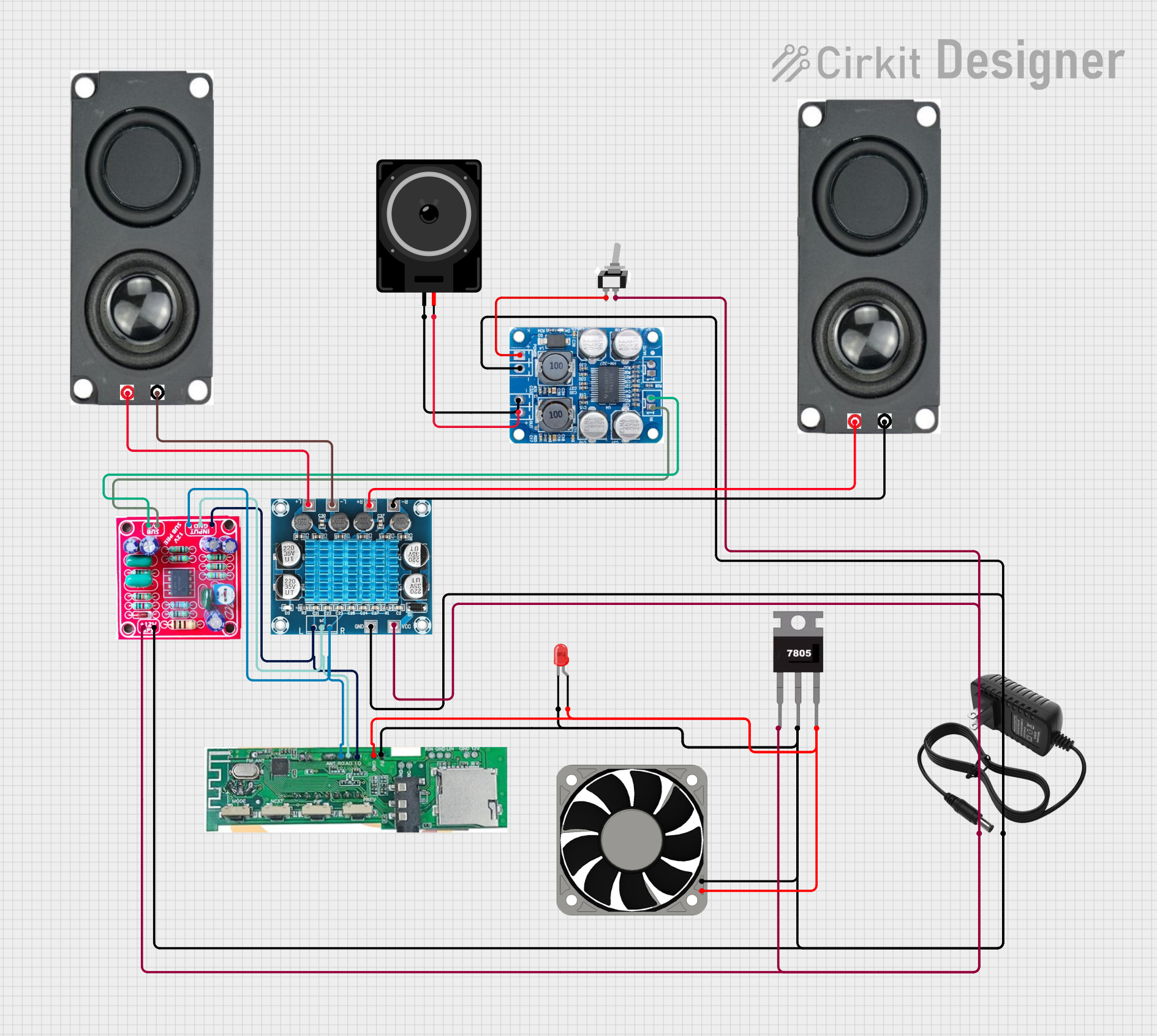
 Open Project in Cirkit Designer
Open Project in Cirkit Designer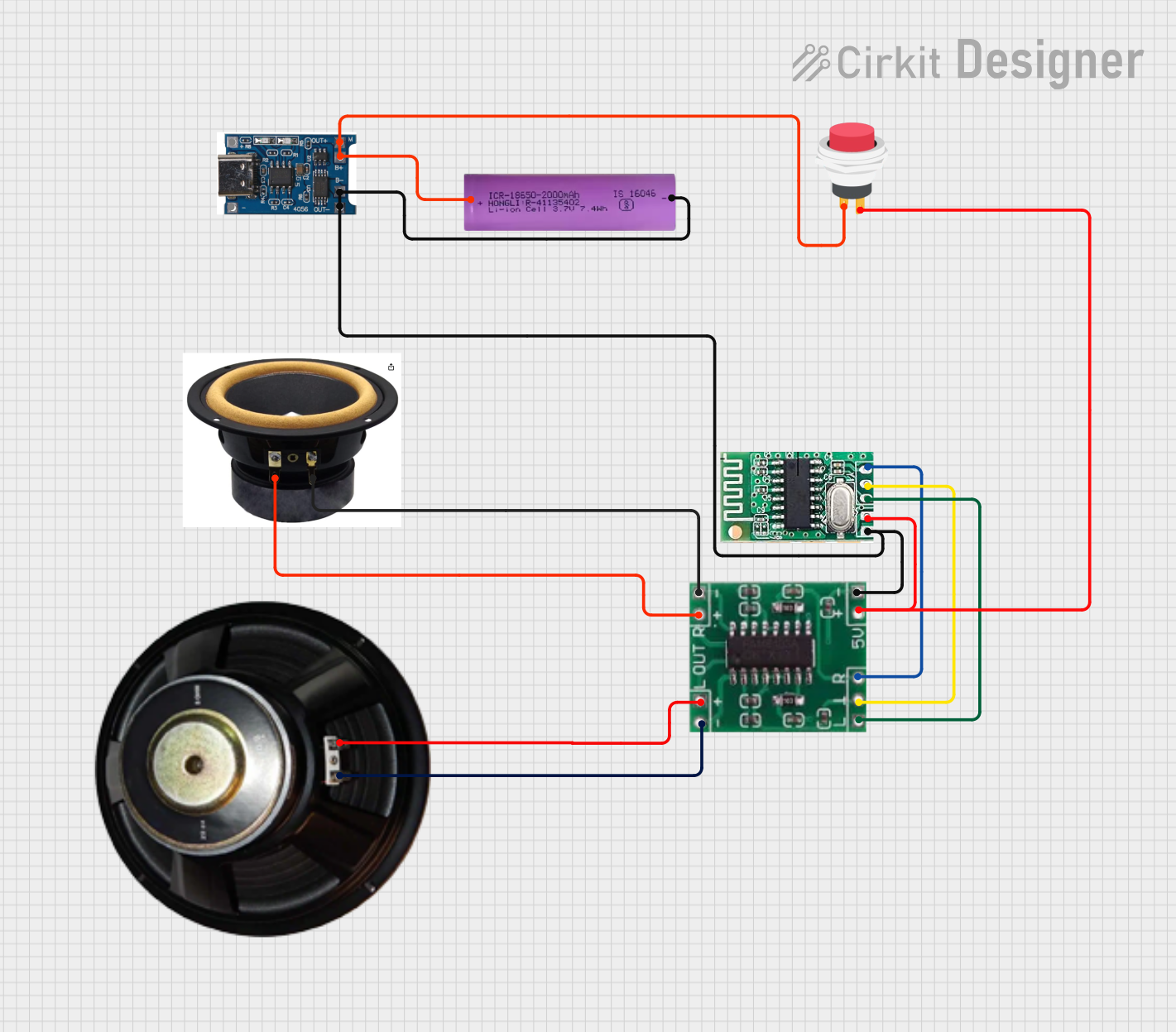
 Open Project in Cirkit Designer
Open Project in Cirkit Designer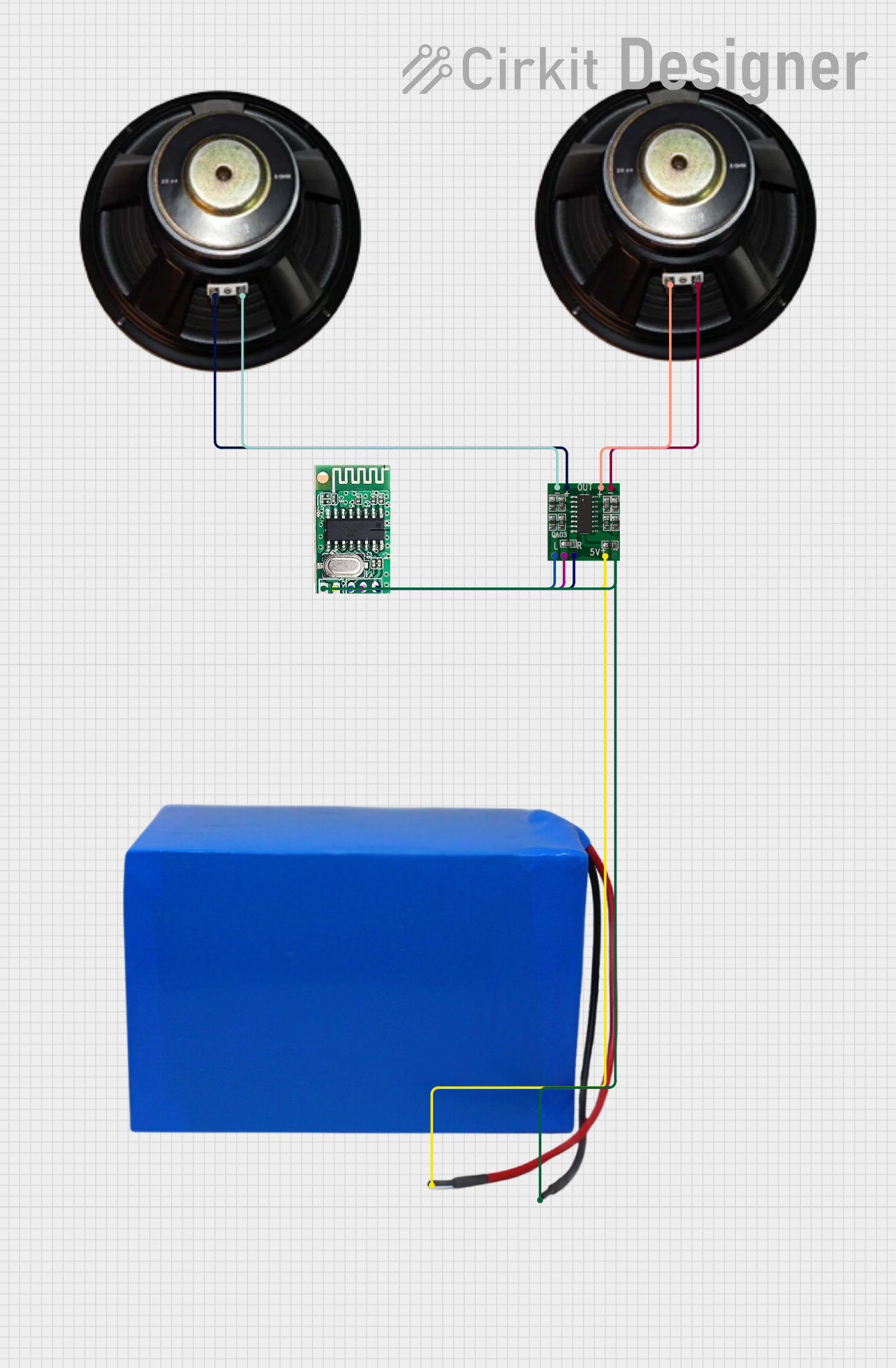
 Open Project in Cirkit Designer
Open Project in Cirkit DesignerExplore Projects Built with 4ohm 5W speaker

 Open Project in Cirkit Designer
Open Project in Cirkit Designer
 Open Project in Cirkit Designer
Open Project in Cirkit Designer
 Open Project in Cirkit Designer
Open Project in Cirkit Designer
 Open Project in Cirkit Designer
Open Project in Cirkit DesignerCommon Applications:
- Home audio systems
- Portable Bluetooth speakers
- DIY audio amplifier projects
- Intercom and public address systems
- Educational and hobbyist electronics projects
Technical Specifications
Below are the key technical details of the 4-Ohm 5W Speaker:
| Parameter | Value |
|---|---|
| Impedance | 4 ohms |
| Power Rating | 5 watts |
| Frequency Response | 100 Hz – 20 kHz |
| Sensitivity | 85 dB ± 3 dB |
| Cone Material | Paper or plastic |
| Magnet Type | Ferrite |
| Dimensions | Varies (e.g., 50mm, 70mm) |
| Weight | ~50g |
Pin Configuration and Descriptions
The speaker has two terminals for electrical connections:
| Terminal | Description |
|---|---|
| Positive (+) | Connects to the positive output of the amplifier or audio source. |
| Negative (-) | Connects to the ground or negative output of the amplifier. |
Note: Ensure proper polarity when connecting the speaker to avoid phase cancellation in multi-speaker setups.
Usage Instructions
How to Use the Speaker in a Circuit
Connect to an Amplifier:
- The speaker requires an audio amplifier to drive it effectively. Ensure the amplifier's output impedance matches the speaker's impedance (4 ohms).
- Connect the positive terminal of the speaker to the amplifier's positive output and the negative terminal to the amplifier's ground.
Power Considerations:
- The speaker is rated for a maximum power of 5 watts. Ensure the amplifier does not exceed this power to avoid damaging the speaker.
- Use a resistor or volume control circuit if the amplifier's output power exceeds 5 watts.
Mounting:
- Secure the speaker in an enclosure or mounting bracket to enhance sound quality and protect it from physical damage.
- Ensure the enclosure has proper ventilation to avoid overheating.
Important Considerations and Best Practices
- Avoid Overloading: Do not exceed the 5W power rating to prevent damage to the speaker coil.
- Polarity Matters: Always connect the speaker with the correct polarity to maintain sound quality.
- Enclosure Design: Use a well-designed enclosure to improve bass response and overall sound clarity.
- Avoid DC Signals: Ensure the audio signal is AC and not DC, as DC signals can damage the speaker.
Example: Connecting to an Arduino UNO
The 4-Ohm 5W Speaker can be used with an Arduino UNO via an audio amplifier module (e.g., PAM8403). Below is an example of how to generate simple tones using the Arduino tone() function:
/*
Example: Generating tones with a 4-Ohm 5W Speaker
Components:
- Arduino UNO
- PAM8403 audio amplifier module
- 4-Ohm 5W Speaker
*/
// Define the pin connected to the amplifier's input
const int speakerPin = 9;
void setup() {
// No setup required for tone generation
}
void loop() {
// Generate a 1 kHz tone for 1 second
tone(speakerPin, 1000, 1000);
delay(2000); // Wait for 2 seconds before the next tone
// Generate a 500 Hz tone for 1 second
tone(speakerPin, 500, 1000);
delay(2000); // Wait for 2 seconds before the next tone
}
Note: The Arduino cannot directly drive the speaker. Always use an amplifier module to boost the signal.
Troubleshooting and FAQs
Common Issues and Solutions
| Issue | Possible Cause | Solution |
|---|---|---|
| No sound from the speaker | Incorrect wiring or loose connections | Check all connections and ensure proper polarity. |
| Distorted sound | Amplifier output exceeds 5W or poor signal quality | Reduce the amplifier's output power or check the audio source. |
| Low volume | Insufficient amplifier power | Use a more powerful amplifier (within limits). |
| Speaker not working after use | Overloading or exposure to DC signals | Replace the speaker and ensure proper power handling. |
FAQs
Can I connect the speaker directly to an Arduino?
No, the Arduino cannot provide sufficient power to drive the speaker. Use an audio amplifier module.What happens if I exceed the 5W power rating?
Exceeding the power rating can damage the speaker's voice coil, leading to permanent failure.Can I use this speaker for bass-heavy applications?
While the speaker can handle a range of frequencies, it may not perform well for deep bass. Consider using a subwoofer for better bass response.How do I improve sound quality?
Use a well-designed enclosure and ensure the amplifier provides a clean, distortion-free signal.
By following these guidelines, you can effectively use the 4-Ohm 5W Speaker in your audio projects.